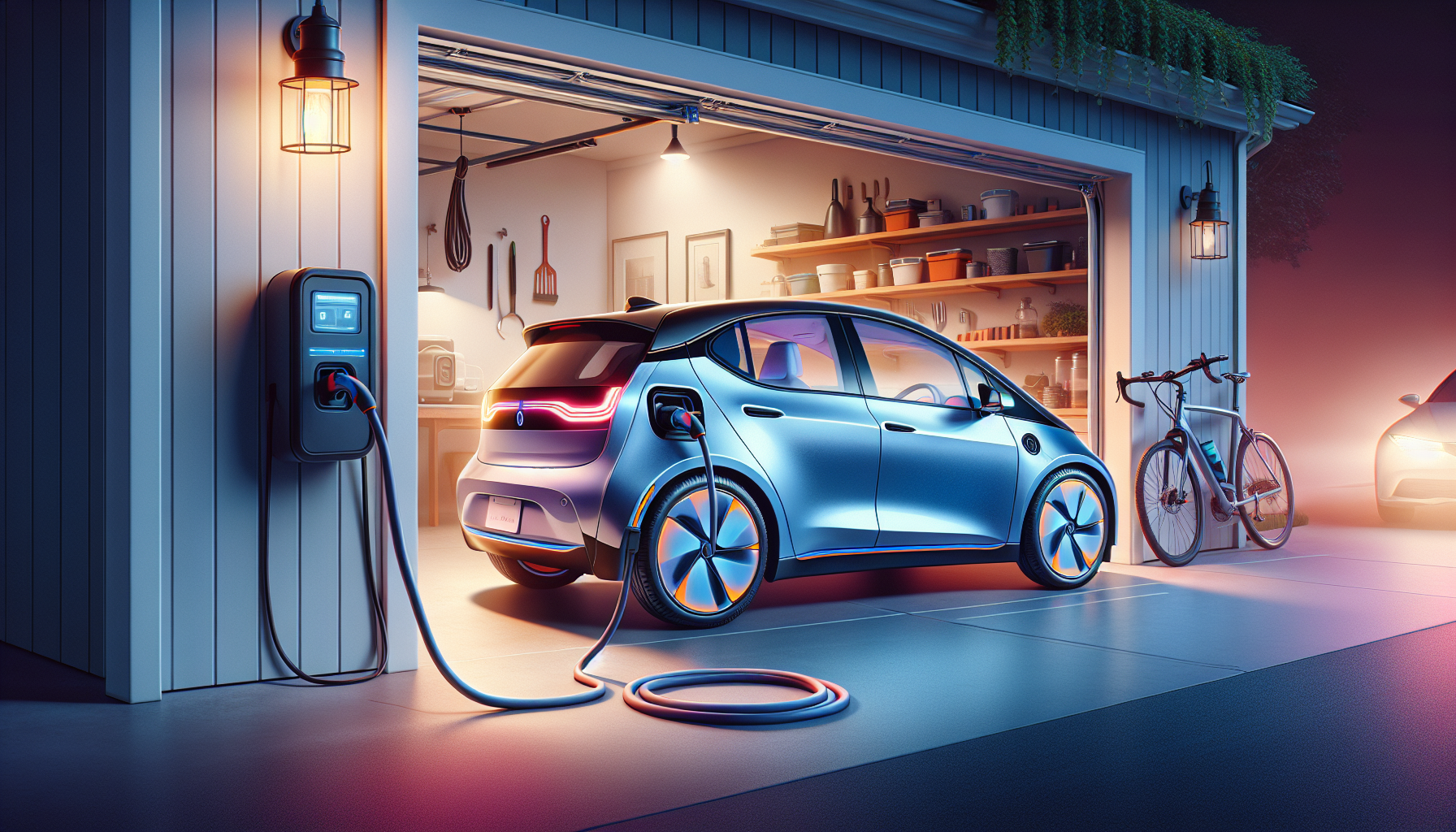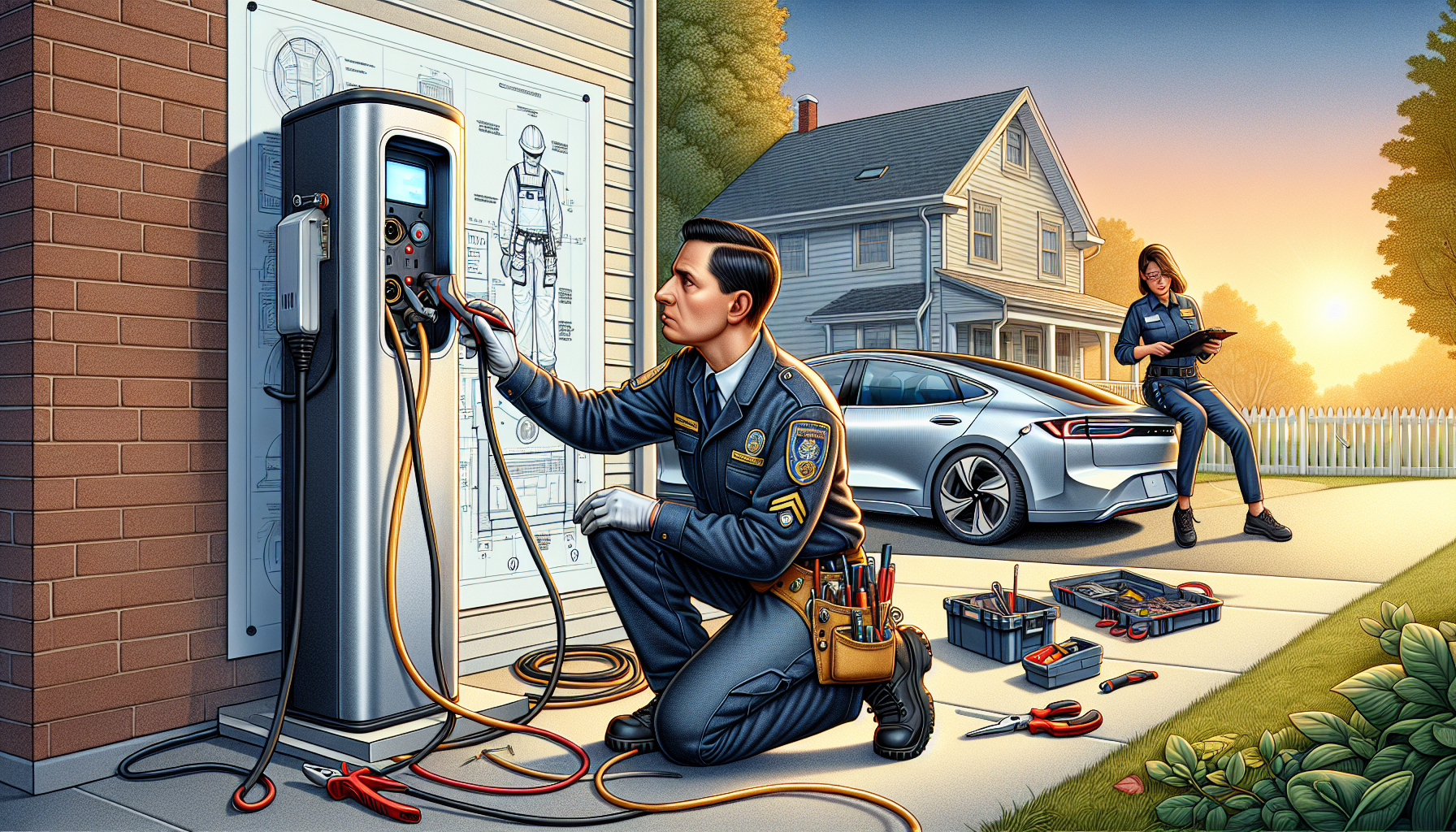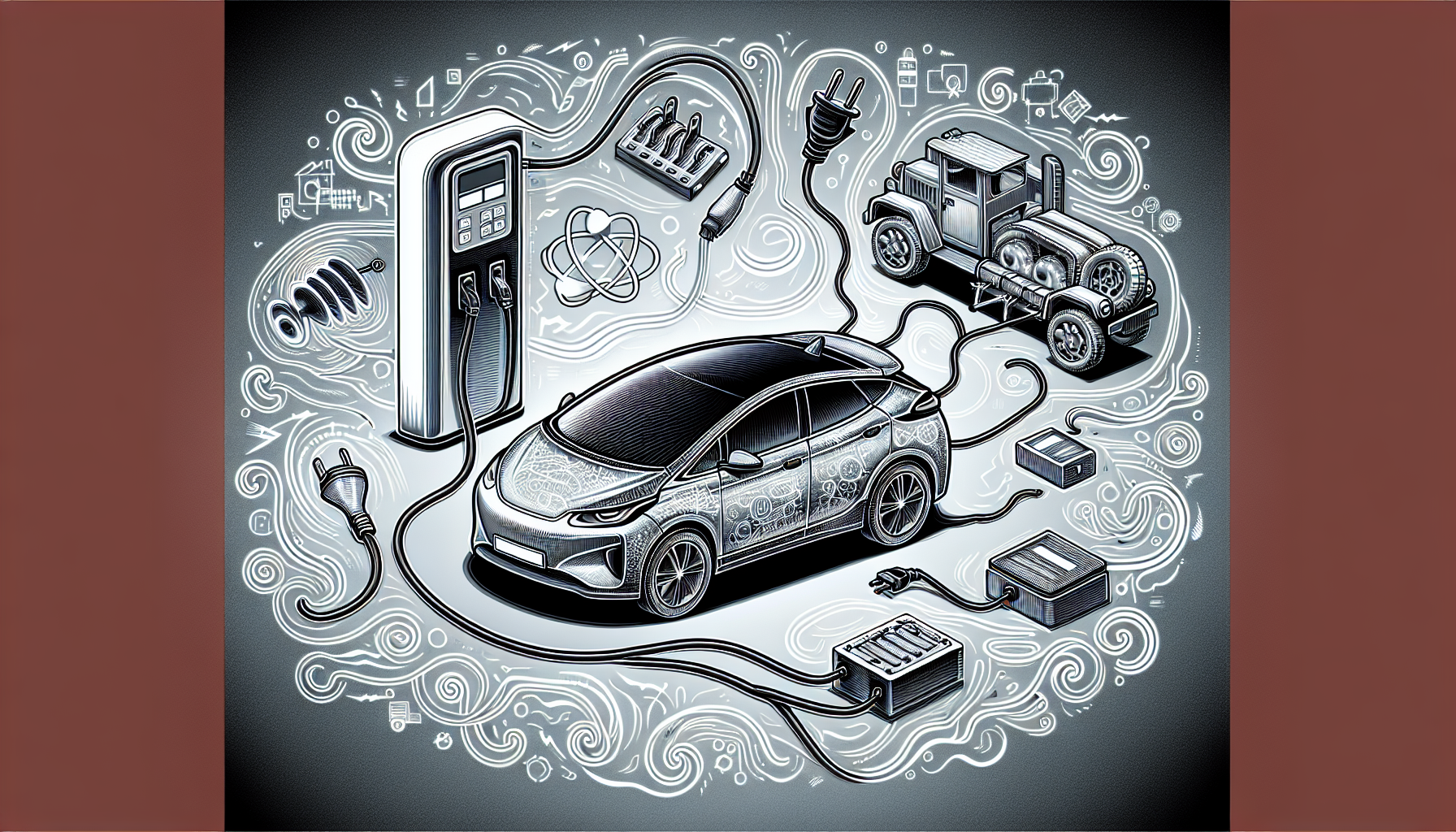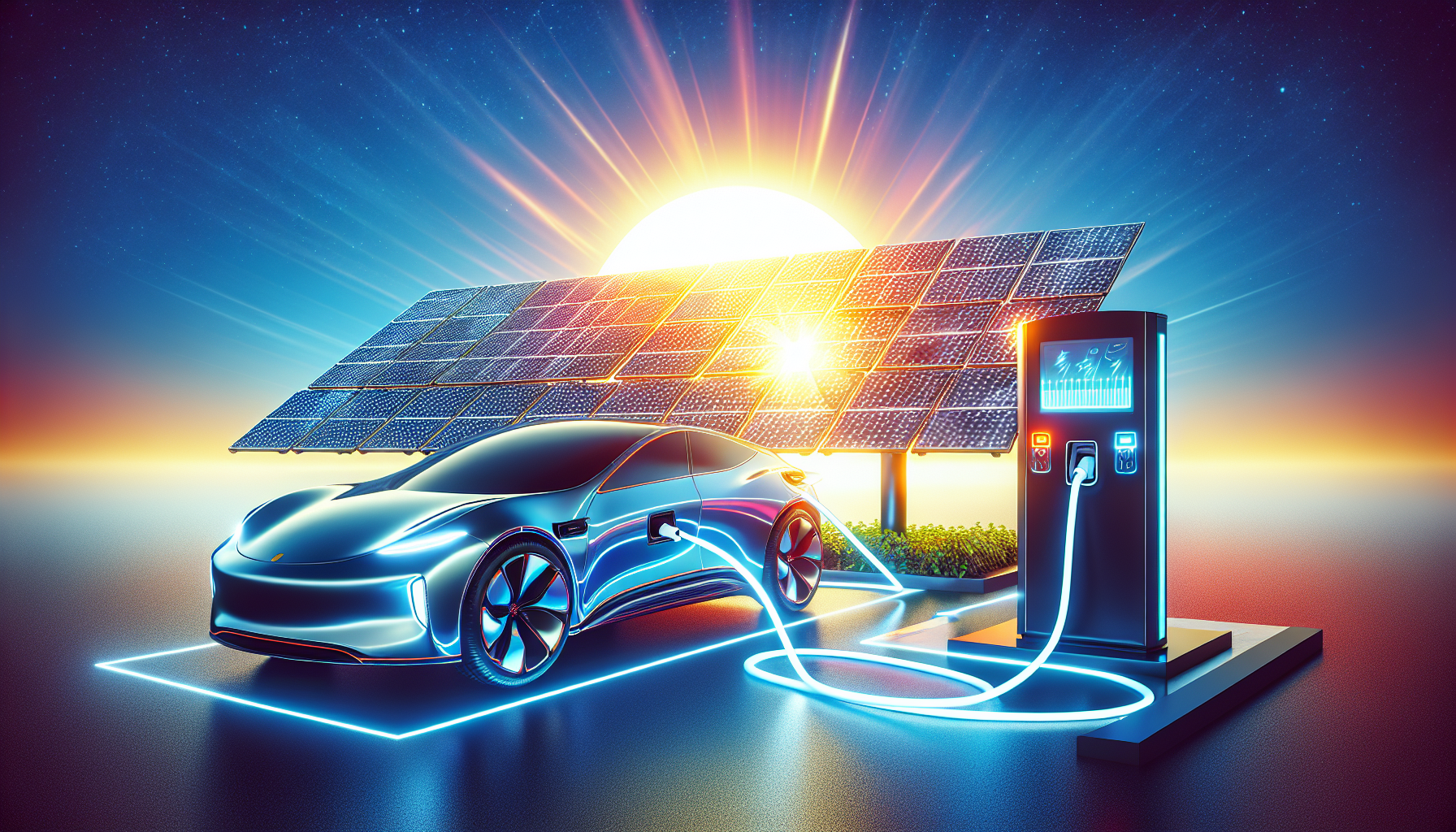How to Charge Your Electric Vehicle at Home: Top Tips for Easy EV Charging
Are you wondering how to charge your electric vehicle at home? It’s a straightforward process that can be done using a standard outlet or a dedicated EV charger. In this article, we’ll walk you through the types of home chargers available, the installation process, and essential tips for taking care of your EV’s battery.
Key Takeaways
-
Charging your electric vehicle at home is convenient and offers significant cost savings compared to traditional fueling methods, with the option of Level 1 and Level 2 chargers for different needs.
-
Installing a dedicated home EV charger should be handled by a certified electrician to ensure safety and compliance with regulations, and choosing the right location and considering potential costs and incentives is essential.
-
Optimizing EV battery life involves adopting mindful charging habits such as minimizing fast charging and avoiding full charges, as well as managing temperature effects and potentially using solar power to further reduce costs and environmental impact.
0 Introduction
Imagine waking up to a fully charged vehicle ready to whisk you away without a pit stop at the gas station. That’s the promise of home EV charging—a beginner’s guide to which you’re about to dive into. We’ve laid out a roadmap that will navigate you through:
-
The basics of charging your electric vehicle at home
-
The types of chargers
-
How to install them
-
The best practices for maintaining your EV’s battery life.
Charging your electric vehicles at home is simpler than you might think, and as you’ll soon discover, it’s a game-changer for electric car owners.
Charging Your EV at Home: The Basics

The concept is straightforward: Your electric car, much like any battery-powered device, needs to be recharged after use. Yet, the simplicity of electric car charging speed and convenience is what sets it apart from traditional fueling methods. No more waiting in line or fumbling with fuel caps. Instead, you just plug your vehicle into a power outlet at home.
A dedicated EV charger enhances this experience, promising faster charging and a full battery charge without ever leaving your property. This home convenience is not only a perk for electric car owners but also a savvy step towards self-sufficiency in ev charging.
Types of Home EV Chargers
Charging stations come in different shapes and sizes, but when it comes to home charging, there are two main players: Level 1 and Level 2 chargers. Each type of home EV charger serves unique energy needs, offering a range of electric car charging speeds and power outputs at your personal charging station. In contrast, public EV charging stations provide a convenient option for on-the-go charging.
Let’s plug into the specifics of these chargers, and see which might suit your lifestyle and your electric vehicle best.
Level 1 Chargers
Level 1 chargers are the most accessible option for many EV owners. All you need is a standard 230V AC outlet to get started. These chargers are perfect for those who drive shorter distances daily and can afford to charge their vehicles overnight.
Even though it can take quite a while to fully charge a large EV battery, the convenience of using your existing power outlet without any additional installation makes Level 1 chargers an attractive choice for infrequent drivers or those looking for a simple, cost-effective solution.
Level 2 Chargers
For those requiring a quicker battery top-up, Level 2 chargers are the way to go. They use a more powerful 240V outlet and can add 10-20 miles of range per hour of charging, significantly faster than their Level 1 counterparts. This means you can fully charge your EV’s battery overnight, ready for the next day.
However, you’ll need to have a dedicated 240V outlet installed by a certified electrician, which is a small investment for the convenience of faster charging.
Installing a Dedicated EV Charger

When it comes to installing a dedicated EV charger, there’s a bit more to consider than just picking one off the shelf. To ensure safe and efficient charging, you’ll need to:
-
Comply with state and territory regulations and manufacturer’s recommendations.
-
Choose the right location for the charger.
-
Hire a certified electrician to install the charger.
-
Assess the costs and potential incentives for installing the charger.
It’s a process that involves a bit of planning, but it will ensure that you have a safe and reliable charging solution for your electric vehicle.
Choosing the Right Location
Selecting the ideal spot for your EV charger can make all the difference. It should be as close as possible to your vehicle’s charging port—within 3 meters is optimal—to minimize the length of the charging cable and maximize convenience. Additionally, placing the outlet near the garage door offers the flexibility to charge your car inside or outside, depending on your space and needs.
Hiring a Certified Electrician
Don’t be tempted to DIY this one—installing a home EV charger is a job for a certified electrician. Not only will they ensure that the installation meets electrical codes and safety standards, but they can also assess whether your current electrical system needs any upgrades to handle the additional load of your new charger.
Plus, they can provide valuable advice on the best charger for your specific energy needs and the layout of your home.
Costs and Incentives
While the upfront cost of an EV charger and its installation might seem steep, ranging from $1000 to $3000 plus labor, there are often rebates and incentives available that can help offset these costs. It’s worth doing some research to see if your region offers any financial assistance for making the switch to an eco-friendlier charging option at home.
Factors Affecting EV Charging Speed

Charging your EV at home is not a one-size-fits-all situation. Several factors can affect how rapidly your EV’s battery replenishes its charge, including power output, the battery’s capacity, and even your home’s electrical system.
It’s crucial to consider these elements to understand how to optimize your charging speed and get the most out of your EV.
Power Output
The charger’s power output, or the rate at which it can feed electricity into your EV’s battery, is a key determinant of your charging speed. Level 1 chargers typically offer a lower kW output, resulting in slower charge times, while Level 2 chargers can provide a much quicker boost thanks to higher kW output.
To put it into perspective, a single-phase Level 2 charger could add roughly 42 km of range per hour, whereas a three-phase one could triple that amount.
Battery Capacity
The size of your EV’s battery also plays a significant role in how long it will take to charge. Larger batteries offer more range but take longer to fill up. Moreover, battery health can impact charging times; as batteries age and degrade, they may charge more slowly, which is something to keep in mind over the lifespan of your vehicle.
Home Electrical System
Your home’s electrical system is another piece of the charging puzzle. Most homes are equipped with single-phase power, which is sufficient for Level 1 and some Level 2 chargers. However, if you want to maximize the charging speed with a three-phase Level 2 charger, you may need an electrical system upgrade.
This is especially important to consider if you’re looking to future-proof your home charging capabilities.
Optimizing EV Battery Life
As an EV owner, you’ll want to get the most life out of your battery. The good news is that there are several strategies you can employ to help extend its longevity, from the way you charge it to how you handle it in different weather conditions.
Let’s delve into the best practices that can help keep your EV battery healthy and efficient for years to come.
Charging Habits
Your daily charging habits can have a significant impact on your battery’s lifespan. Minimizing fast charging is one way to preserve battery health, as it can be harsher on the battery compared to slower, regular charging.
Additionally, setting your charger to stop at 80% can help avoid the stress of a full charge on your battery, thereby extending its life.
Avoiding Full Charges
While it can be tempting to charge your EV’s battery to full capacity, doing so regularly can actually degrade the battery over time. Sticking to partial charges and avoiding the 100% mark except for long trips can help maintain your battery’s health and longevity.
Temperature Considerations
Temperature can also affect your battery’s performance and lifespan. Extreme heat or cold can slow down the charging process and potentially damage the battery. Parking your EV in a garage or shaded area during extreme temperatures can help protect the battery and keep it charging efficiently.
Charging Your EV with Solar Power

Harnessing the power of the sun to charge your EV is not only an environmentally friendly choice, but it can also lead to significant cost savings. Solar charging is becoming an increasingly popular option for EV owners, and with the right setup, it can significantly reduce or even eliminate the cost of charging your vehicle at home.
Solar System Setup
Setting up a solar system for EV charging involves a few key steps. You’ll need to determine the size of the solar system required to meet both your household and EV charging needs, which typically means a system that’s 50% larger than what a non-EV household might use.
Contacting a solar retailer and purchasing an appropriate charger will be your next steps to ensure that you can take full advantage of solar charging capabilities.
Benefits of Solar Charging
The benefits of solar charging include:
-
Cost savings
-
Reduced reliance on the grid
-
Taking advantage of lower daytime solar generation costs, which can be a cheaper option depending on your feed-in tariff.
Additionally, charging with solar power can decrease your carbon footprint, making it a win for both your wallet and the planet.
Grid-Supplemented Charging
Even if your solar system can’t fully charge your EV battery every day, smart chargers can help make the most of your solar power by adjusting the charging rate to match your generation. If you need additional power, the charger can supplement with grid energy to ensure your EV is always ready to go. This dynamic adjustment allows you to maintain a consistent charging schedule without being overly reliant on sunny weather.
Finding the Right Home EV Charger for You

With so many options on the market, finding the right home EV charger for your specific needs can seem daunting. But by considering factors like your driving frequency, vehicle compatibility, and desired charging speed, you can narrow down the choices and find the perfect fit for your electric car and lifestyle.
Driving Frequency
Your driving habits will largely dictate what kind of home EV charger is best for you. If you have a long daily commute, you might benefit from a faster Level 2 charger to ensure your EV is ready to go each morning.
On the other hand, if you drive less frequently, a Level 1 charger may suffice for your needs.
Vehicle Compatibility
It’s also essential to ensure that the charger you select is compatible with your vehicle. Check your EV’s specifications to understand the maximum charging speed it can handle and choose a charger accordingly. Keep in mind that some older models may require specific cables or adapters, so it’s worth doing your research before making a purchase.
Cost of Charging an Electric Car at Home
One of the biggest advantages of owning an electric vehicle is the potential cost savings on “fuel.” Charging your EV at home is generally cheaper than filling up a petrol car, but the exact costs will depend on factors such as your electricity rates, the size of your EV’s battery, and how you choose to charge.
Electricity Rates
Electricity rates are a significant factor in the cost of charging your electric car at home. These rates can vary by location, time of day, and the specific tariff you’re on, with controlled load tariffs and off-peak periods offering the most savings. Charging during peak hours can lead to higher costs, so it’s beneficial to plan your charging sessions accordingly.
In Australia, rates for charging electric cars typically range from 20 to 35 cents per kWh, which is generally stable compared to the erratic prices of petrol.
Comparing Costs to Gasoline
When it comes to running costs, EV owners can enjoy significant savings. On average, an EV owner may save between $700 to $1,000 annually compared to operating a gasoline-powered car. Charging during off-peak hours or using solar power can further increase these savings, making EV ownership an economically wise choice over the long term.
Moreover, public charging costs, while variable, often still present a more cost-effective option compared to the fluctuating prices of gasoline.
Common Mistakes to Avoid When Charging at Home
Charging an EV at home is generally a straightforward process, but there are a few pitfalls to avoid. By being aware of common mistakes such as inadequate planning, unnecessary expenses on advanced chargers, and safety overlooks, you can ensure a smooth and efficient home charging experience.
Inadequate Electrical Setup
An inadequate electrical setup is one of the most critical mistakes to avoid. Consult with a qualified electrician to ensure that your home’s electrical system can accommodate the additional load from an EV charger. Installing a dedicated circuit is essential to prevent potential hazards like overloading, which could lead to dangerous situations.
Upgrading your home’s wiring may be necessary to safely support the charger.
Overlooking Safety Measures
Safety should always be a top priority when charging your EV at home. Here are some tips to keep in mind:
-
Use chargers and cables that are in good condition
-
Avoid using extension cords with EVSE, especially during Level 1 charging
-
Have a residual current device (RCD) installed to prevent electric shocks
Remember, your EV comes with built-in safeguards against overcharging and overheating, which should not be compromised by unsafe charging practices.
Summary
As we reach the end of our electrifying journey, it’s clear that charging an electric vehicle at home is not only convenient but also cost-effective, environmentally friendly, and increasingly accessible. Through careful consideration of charger types, installation requirements, and charging strategies, you can enhance your EV experience and contribute to a greener future. Embrace the charge, and let your EV take you further with the power of your own home.
Frequently Asked Questions
Can I charge my electric vehicle with a standard wall outlet at home?
Yes, you can charge your electric vehicle at home using a standard wall outlet with a Level 1 charger, which is perfect for overnight charging and daily commutes.
How long does it take to charge an electric car at home?
At home, it usually takes about 4-8 hours to fully charge an electric car using a Level 2 charger. Happy charging!
Do I need a professional to install a home EV charger?
Yes, it's highly recommended to hire a certified electrician to install your home EV charger, as they can ensure it meets safety standards and assess any necessary electrical system upgrades.
Is it more cost-effective to charge an EV at home or to use public charging stations?
Charging an EV at home, especially during off-peak hours or with solar power, can be more cost-effective, but public charging stations are convenient for travel. Choosing the right option depends on your specific needs and circumstances.
How can I extend the life of my EV's battery?
To extend the life of your EV's battery, avoid frequent full charges, minimize fast charging, and keep the battery within a 20-80% charge range. Additionally, protect the battery from extreme temperatures by parking in shaded areas or garages.








